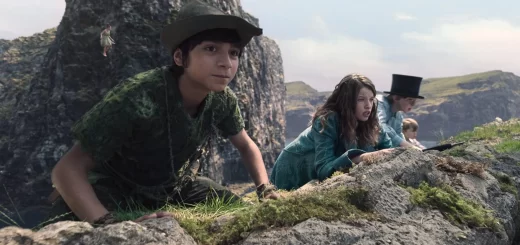Run: Don’t Walk, by David Bax

Usually, when movies start out by showing us the peaceful, happy lives of their characters, it’s a major clue that something is either about to go wrong or is already very wrong just beneath the surface. Aneesh Chaganty’s Run is no exception but its early scenes may seem especially ideal to viewers who are eight months into quarantine. Mother Diane (Sarah Paulson) and daughter Chloe (Kiera Allen) have the perfect self-reliant lifestyle in their picturesque house in small town Washington state, with a loving relationship and hobbies like gardening and computer engineering to fill their time. But there’s no pandemic going on in this movie and just when you start to notice the oddities–does the teenage Chloe not have any friends?–a sinister new light is shed on the circumstances.
Chloe has been homeschooled her entire life due to a bevy of physical health issues stemming from complications at birth. Diane acts not just as Chloe’s mother and teacher but also her nurse, procuring and doling out her medications. One day, while rummaging for snacks as teenagers do, Chloe discovers a new bottle of medicine, this time with Diane’s name on the prescription instead of hers. When those pills nonetheless end up in her allotment the next day, Chloe starts to pull on a thread that will unravel her whole perfect life.
Chloe’s nearly hermetic existence recalls the premise of Stella Meghie’s Everything, Everything from a few years ago, another movie about an ailing girl forced to stay at home with her single mother. But Chaganty’s making a thriller here, not a romance. Chloe’s limitations add a complication to the tense set-pieces, some of which recall Fede Alvarez’s Don’t Breathe in their edge-of-the-seat inventiveness.
That unfairly makes Run sound like a rehash of existing ideas, though, which wouldn’t be accurate. Chaganty (who co-wrote the screenplay with Sev Ohanian) repeatedly devises fun, ingenious problems for his heroine to solve, like when an internet outage and the lack of a smartphone leave Chloe trapped by the limitations of, essentially, the ’90s. 411 takes a lot longer than Google, especially when you’re trying to get information in secret while your mother could walk back into the room at any moment. And visually, Chaganty, along with cinematographer Hillary Spera and editors Nick Johnson and Will Merrick, make hay out of Chloe’s use of a wheelchair, turning multiple small moments into miniature vehicular chase sequences.
Counterintuitive though it may seem, fun such as the instances described above is a pretty crucial ingredient to a lot of horror. And, while Run has the tension and relief cycles of a thriller, horror is ultimately just what it is. Very minor spoilers you’ve probably already guessed follow in the next paragraph.
Horror movies generally feature a monster of some kind, even when that monster is a human being. Paulson plays that role here and, for a while, she’s the best kind, the kind with a motivation that’s at least somewhat understandable. One of the most chilling things about Run is pondering just how many parents in the audience might sympathize with Diane a little and just how far into the movie they might get before that sympathy runs out.



























